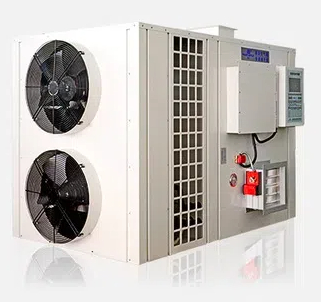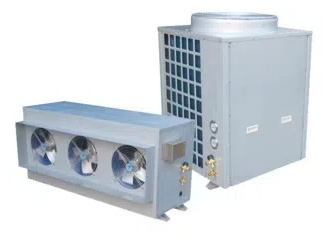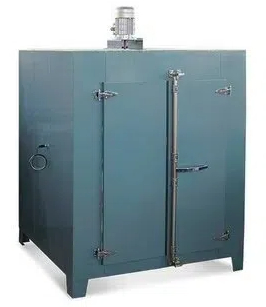
Content Menu
● Introduction
● How Heat Pump Dryers Work
● Plumbing Requirements and Options
● Installation Requirements
>> Location Considerations
>> Space Requirements
● Benefits of Heat Pump Dryers
● Maintenance Considerations
● Smart Features and Technology
● Environmental Impact
● Conclusion
● Frequently Asked Questions
>> Q1: Do heat pump dryers require external venting?
>> Q2: How often do I need to empty the water tank?
>> Q3: Can a heat pump dryer be installed in any room?
>> Q4: Are heat pump dryers more expensive to purchase?
>> Q5: How long do heat pump dryers typically last?
Introduction
Heat pump dryers represent a revolutionary advancement in laundry technology, offering superior energy efficiency and flexible installation options compared to traditional dryers. This comprehensive guide will explore whether these innovative appliances require plumbing and what you need to know before installing one in your home.
How Heat Pump Dryers Work
Heat pump dryers operate using a closed-loop system that's fundamentally different from conventional dryers. They use advanced heat exchange technology to remove moisture from clothes while recycling hot air within the system. This process not only makes them more energy-efficient but also affects their installation requirements.

Plumbing Requirements and Options
One of the most significant advantages of heat pump dryers is their flexibility regarding plumbing requirements. Unlike traditional vented dryers, heat pump dryers don't need external ventilation. They offer two main options for handling condensed water:
1. Built-in Water Tank
- Collects condensed water during the drying cycle
- Requires manual emptying when full
- Provides complete installation flexibility
- Ideal for locations without nearby plumbing
2. Direct Drain Connection
- Optional plumbing connection
- Automatically drains condensed water
- Eliminates the need for manual emptying
- Requires proximity to a drain pipe
Installation Requirements
Location Considerations
Heat pump dryers can be installed in various locations due to their ventless design. Key requirements include:
- Level flooring
- Adequate room temperature (5°C to 35°C)
- Sufficient air circulation
- Access to an electrical outlet
- Optional proximity to drainage if using direct drain connection
Space Requirements
When planning your installation, consider:
- Minimum clearance requirements
- Door swing space
- Access for maintenance
- Room for water tank removal (if not using direct drain)

Benefits of Heat Pump Dryers
1. Energy Efficiency
- Uses significantly less energy than conventional dryers
- Lower operating costs
- Reduced environmental impact
2. Installation Flexibility
- No need for external venting
- Multiple installation locations possible
- Stackable with compatible washers3. Gentle on Clothes
- Lower drying temperatures
- Reduced fabric wear
- Better protection for delicate items
Maintenance Considerations
Regular maintenance is essential for optimal performance:
- Clean lint filters after each use
- Empty water tank regularly (if not using direct drain)
- Clean heat exchanger periodically
- Check and clean condenser unit
- Ensure proper ventilation around the unit
Smart Features and Technology
Modern heat pump dryers often include advanced features:
- Smart connectivity
- Multiple drying programs
- Moisture sensors
- Energy consumption monitoring
- Automatic maintenance alerts
Environmental Impact
Heat pump dryers contribute to environmental sustainability through:
- Reduced energy consumption
- Lower carbon footprint
- Water conservation options
- Longer appliance lifespan
- Eco-friendly operation
Conclusion
Heat pump dryers offer a versatile and energy-efficient solution for modern homes. While they don't require traditional plumbing or venting, they provide flexible options for water management through either a built-in tank or direct drain connection. Their installation flexibility, combined with advanced features and environmental benefits, makes them an excellent choice for environmentally conscious consumers seeking efficient laundry solutions.

Frequently Asked Questions
Q1: Do heat pump dryers require external venting?
A: No, heat pump dryers use a closed-loop system and don't require external venting, making them more flexible for installation locations.
Q2: How often do I need to empty the water tank?
A: If not using a direct drain connection, the water tank typically needs emptying every 2-3 drying cycles, depending on load size and moisture content.
Q3: Can a heat pump dryer be installed in any room?
A: Yes, as long as the room meets temperature requirements (5°C-35°C) and has adequate ventilation and a level surface.
Q4: Are heat pump dryers more expensive to purchase?
A: While initial purchase costs are higher, the energy savings over time often offset the higher upfront investment.
Q5: How long do heat pump dryers typically last?
A: With proper maintenance, heat pump dryers can last 10-15 years, often longer than conventional dryers.












